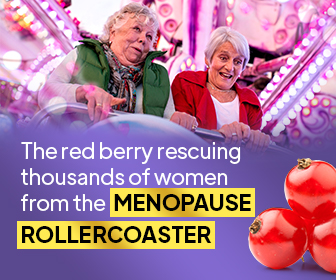No one likes being cooped up indoors during the winter months, but some people are more affected by it than others. In fact, there is a type of seasonal clinical depression that affects a certain number of people each winter – it is called Seasonal Affective Disorder, or SAD. It is sometimes known simply as winter depression as well. Occasionally people experience SAD in the spring or summer months, but this is much less common.
Sometimes people don’t notice they have SAD because they are just experiencing what feels like normal winter blues. The truth is, however, that no one should have to feel miserable all winter, even if the weather is cold and dark. It’s therefore important to find out if you have SAD as early as you can, so you can start enjoying your life for half the year again.
Diagnosis of SAD can be tricky because it takes at least two winter seasons of having depression, but luckily there are natural remedies that you can do on your own before getting an official doctor’s diagnosis. If you think you might have SAD, give one of the following remedies a try to start feeling better as soon as possible.
Light Therapy
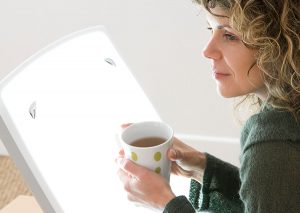
While the technology of light therapy boxes has gotten better, the basic form of treatment has been the same for almost forty years now. The concept is this: you simply sit in front of your light box for a certain amount of time each day during the seasons in which you get SAD (most likely the fall and winter). This will relieve the symptoms, at least to a certain extent, so you can get by during those darker, colder months without experiencing depression the whole time.
The key with light therapy is to not use any light, but rather to purchase an actual light box. These light boxes should have far more lux than in regular indoor lighting — around 10,000 lux, in fact, which is 20 times the amount of a typical light. This is crucial for maximizing your time and getting the light your body needs to function correctly. According to the National Institute of Mental Health, light therapy should be done for around 20 to 60 minutes per day, ideally first thing in the morning.[1]
You might start noticing improvement in just a few days. There is also the possibility of some minor and short-lived side effects, including headache, eye strain, fatigue, irritability. Don’t use the light box too late in the day, as that could make it difficult to sleep, according to the University of Michigan Depression Center.[2]
Light boxes are an investment, but they are generally affordable, never costing more than a few hundred dollars. Be sure to purchase ones that are officially certified — never attempt to make your own or use a tanning bed instead.
Exercise

Exercising with SAD is a tricky ask for a lot of people, mainly because getting the motivation to exercise is not easy when you have depression (to say the least). According to the Mayo Clinic, however, exercise eases the symptoms of depression, and it could be a good way keep your depression in check over the winter months.[3]
Exercise works because it releases endorphins. Endorphins are a kind of hormone produced in the brain that will make you simply feel good. Better yet, the exercise itself will help you focus on something else for a while — and that can be a good way to ease your depression for at least a few minutes, or to slow the downward spiral that comes with negative thoughts that accompany depression.
There are a number of other possible benefits to exercising, too. If you exercise in a way that involves social interaction (such as joining a team, for example) then having that structure of social activity can give your mood a boost. Getting used to exercising when you are depressed or anxious also helps you develop a healthy coping mechanism. Instead of drugs or alcohol, using exercise to cope is generally a healthy idea.
Fun Fact: Exercising regularly can be easy. In fact, short spurts of activity (not necessarily exercise) already serve as an improvement. So, if getting a gym membership sounds overwhelming, simply try walking more or parking your car a little farther away than usual.
Vitamin D
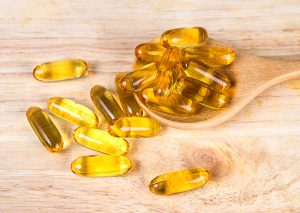
According to one study published in Medical Hypotheses in November 2014, lower levels of vitamin D is associated with SAD.[4] When other researchers studied whether vitamin D supplements were a good way to combat the symptoms of depression, it was found that taking vitamin D supplements had results that were comparable to taking antidepressants.[5] In other words, there is a way to get the same positive results of antidepressant pharmaceuticals but without needing a prescription, having to pay a hefty sum of money, or experiencing negative side effects. Vitamin D supplements are affordable and available over the counter.
If you want to see the numbers yourself, you can check your levels of vitamin D by seeing your doctor. Besides improving your symptoms of SAD, having proper levels of vitamin D could also make you less likely to get sick and strengthen your bones.
Explore the Outdoors

Although vitamin D supplements and light boxes can help with what you’re lacking in sunshine, rays from the sun are still the most effective and natural remedy to help with SAD. SAD is a result of the seasonal changes, which often takes the form of cold and clouds, and that means staying inside more often. The natural response to fight this, then, is to simply go outside more often.
Even if it is a cloudy day, going outside on a more regular basis can help. Better yet, if you see any direct sunlight finding its way through the gray, get exposure to it as much as you can. Even if you live in a colder climate, it’s worth putting on your winter gear to get some fresh air and sunshine. The ideal time for maximum sun exposure is around noon, but of course any time you can get outside is better than nothing.
The absolute best thing to do is exercise outdoors in the sun, but of course that is not possible in everyone’s climate. When you’re indoors, be sure to keep the window shades open and the light coming in. Making your environment as bright as possible can help you stay on top of SAD.
Fun Fact: Around 10 to 15 million Americans are affected by SAD – most of whom live in northern, colder climates. It is also more common in women than in men (4 out of 5).
Cognitive Behavioral Therapy
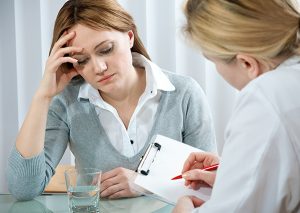
This is a fancy name for a simple concept: talking about your problems with a professional. The purpose of cognitive behavioral therapy (CBT) is to change your negative cycles of thinking and it is used for a variety of ailments, including depression, anxiety, addiction, and other mental health disorders.
The main goal of cognitive behavioral therapy is to learn how to accurately label negative thinking patterns, thus equipping yourself to respond more effectively. While CBT most often recommended specifically to people with mood disorders, it is actually a useful tool for anyone to learn.
There is some evidence to suggest that cognitive behavioral therapy is even more effective than light therapy, especially when you’re looking at long-term results. According to a study published in The American Journal of Psychiatry, for example, patients who used cognitive behavioral therapy to treat their SAD have lower levels of recurrences of SAD after two winters. Their symptoms were also less severe starting with the second winter.[6] In other words, light therapy is just as effective as cognitive behavioral therapy for the first season, but after that cognitive behavioral therapy tends to be more helpful.
Diet Changes

One effective way of treating SAD is to make sure you are eating healthy foods. While it sounds simple, it can be very tricky for someone who is already in the grip of SAD, since they will naturally crave comfort foods that are less healthy. If you want to stop experiencing the devastating effects of SAD, however, changing your diet to one of healing instead of harming can make a world of difference.
According to an article published in the Journal of Medicine and Life, what you don’t eat could be just as important as what you do eat. Diets that have too much in the way of refined starches, saturated and trans-fatty acids, and sugar could be the cause of activating inflammatory pathways. According to this article, inflammation could be a major factor in developing depression. On the other hand, diets rich in natural antioxidants, fruits, vegetables, and whole grains rich in fiber, and omega-3 fatty acids are less likely to be associated with opening up these inflammatory pathways.[7]
According to one article in Philosophical Transactions B, the serotonin system is centrally relevant to mood disorders.[8] It is widely accepted that boosting serotonin levels is a good way to combat depression. Eating foods that increase your serotonin levels could be a good way to start. These foods include turkey, bananas, peas, spinach, pumpkin, nuts, and chicken.[9] Other useful foods are leafy greens, lean protein, and fish. Additionally, stick with complex carbs rather than white carbs. [10]
Dawn Simulator
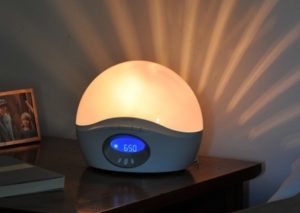
Have you ever heard of a dawn simulator? It’s a kind of device that serves as an alarm clock, but it uses your body’s natural processes to wake up differently than with other devices. Dawn simulators don’t use music or loud sounds to wake you up – they use light.
Dawn simulators start out producing dim light and then it gradually brightens and brightens (mimicking the effect of the sun rising) until you wake up. According to people who use it, it is a much gentler way to wake up. Rather than being jarred away by loud buzzing, they were smoothly eased into transitioning from sleep to wakefulness.
According to a study done in Russia in 2015, using a dawn simulator was just as effective as using light therapy. This study was performed on 40 people suffering from SAD in the wintertime. According to the results, light therapy was 43.8% effective, while using a dawn simulator was 42.2% effective. In other words, there was no significant difference in effectiveness between the two.
Patients who had more severe symptoms of SAD had the greatest improvements with light therapy, while other patients that were more in the middle saw similar effects in both types of treatment.[11] You need to wake up with an alarm anyway, so why not make it more enjoyable and maybe even beneficial to your health?
Aromatherapy
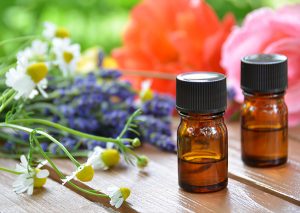
As far as natural remedies go, aromatherapy is a popular one for mood disorders. This is because our sense of smell is highly linked with our emotions – certain smells can transport our minds straight back into a pleasant (or unpleasant) memory, and we feel those emotions more strongly than if we were to simply think about them.
Aromatherapy is all about essential oils. While there is less research on the subject than other kinds of therapies, certain essential oils are thought to have an effect on the brain areas that affect your mood. Of course, the type of essential oil is important. A few recommended for mood boosting include lemongrass, clary sage, and bergamot. In order to sleep better at night, adding lavender essential oil to your bath can relax you before bed.
According to one study done in China in 2015, an essential oil from a poplar tree had antidepressant results, rivaling even antidepressant medications. While more research needs to be done, this shows that it could indicate a potential effective treatment for depressive disorders.[12]
Summary: What Should You Do Now?
SAD affects millions of people, so remember that you’re not alone. There are many different natural treatments to try by yourself without even needing to go to a doctor. You can pick or choose the remedies that make the most sense in your life but the key is to stick with it — nothing is going to work after just one day.
You can even try all of the treatments above to make sure you have the best chance of one of them working. However, if you want to find out which remedy works best for you (which can help with treating SAD easily and effectively the next year), you may want to incorporate these treatments and changes gradually so you can take note of the individual effects.
Take a look below for practical ways of using these natural remedies for SAD.
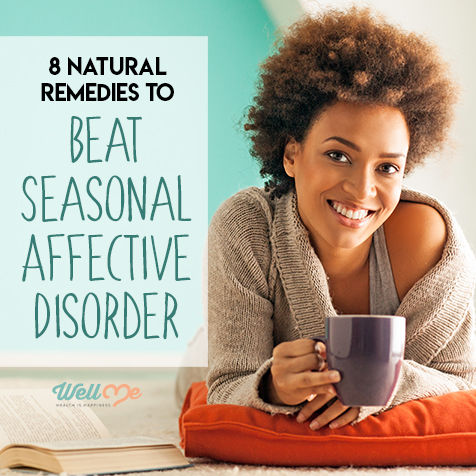
Action Steps: Tips for Treating SAD Naturally
- Buy a light box and/or a dawn simulator. You can order a good one online for less than $200. Make sure it’s certified and check the reviews before purchasing. When you have one, place it so it is positioned above your eyes to get the best effect. Use this for 20-30 minutes per day, and you may see results in less than week.
- Begin incorporating regular activity or exercise into your life. It can be as simple as taking the stairs or parking further away. If you exercise outside it is even better, since being outdoors more often should also be incorporated into your daily routine to combat SAD.
- Purchase some vitamin D supplements and start taking them regularly. Follow the directions that come with it. Purchase some recommended essential oils as well to use aromatherapy for combating the symptoms of SAD.
- Assess your diet — are you getting enough antioxidants, fiber, and omega-3 fatty acids? If not, start adding these nutrients to your diet as soon as possible.
- Find a therapist who does cognitive behavioral therapy. Ideally you would find someone who has specific experience with SAD. Sometimes it takes a few tries to find the right therapist for you, so don’t get discouraged if the first one doesn’t work out.
SAD can feel devastating, but it isn’t hopeless. There are plenty of treatments out there for you to try. If you feel hopeless or are having thoughts of self-harm, call a hotline or see a professional immediately. With a few changes and a little persistence, however, you can live a life free of depression from SAD.
References
- [1] “Seasonal Affective Disorder.” NIH. <https://www.nimh.nih.gov/health/topics/seasonal-affective-disorder/index.shtml>
- [2] “Seasonal Affective Disorder (SAD) and Light Therapy.” University of Michigan Depression Center. <http://www.depressiontoolkit.org/news/seasonal_affective_disorder_and_light_therapy.asp>
- [3] “Depression and anxiety: Exercise eases symptoms.” Mayo Clinic. <https://www.mayoclinic.org/diseases-conditions/depression/in-depth/depression-and-exercise/art-20046495>
- [4] “Possible contributions of skin pigmentation and vitamin D in a polyfactorial model of seasonal affective disorder.” Medical Hypotheses. <http://www.medical-hypotheses.com/article/S0306-9877(14)00335-1/abstract>
- [5] “VItamin D and Depression: A Systematic Review and Meta-Analysis Comparing Studies with and without Biological Flaws.” NCBI. <https://www.ncbi.nlm.nih.gov/pmc/articles/PMC4011048/>
- [6] “Outcomes One and Two Winters Following Cognitive-Behavioral Therapy or Light Therapy for Seasonal Affective Disorder.” The American Journal of Psychiatry. <https://ajp.psychiatryonline.org/doi/10.1176/appi.ajp.2015.15060773>
- [7] “Nutrition and depression at the forefront of progress.” NCBI. <https://www.ncbi.nlm.nih.gov/pmc/articles/PMC3539842/>
- [8] “The neurobiology of depression–revisiting the serotonin hypothesis. II. Genetic, epigenetic and clinical studies.” NCBI. <https://www.ncbi.nlm.nih.gov/pmc/articles/PMC3638388/>
- [9] 10 Science Backed Natural Remedies for Seasonal Affective Disorder.” Natural Living Ideas. <http://www.naturallivingideas.com/seasonal-affective-disorder-remedies/>
- [10] “7 Seasonal Affective Disorder Natural Treatments That Work.” Dr. Axe. <https://draxe.com/seasonal-affective-disorder/>
- [11] “Dawn simulation vs. bright light in seasonal affective disorder: Treatment effects and subjective preference.” NCBI. <https://www.ncbi.nlm.nih.gov/pubmed/25885065>
- [12] “Antidepressant-like effect of essential oil isolated from Toona ciliata Roem. var. yunnanensis.” NCBI. <https://www.ncbi.nlm.nih.gov/pubmed/25465853>
- Fun Fact: “Lazy Person’s Guide to Exercise.” BU Today. Accessed 16 March 2018. <https://www.bu.edu/today/2013/lazy-persons-guide-to-exercise/>
- Fun Fact: “Seasonal Depression.” Mental Health America. Accessed 16 March 2018. <http://www.mentalhealthamerica.net/conditions/sad#Source2>


